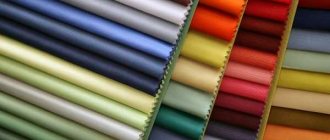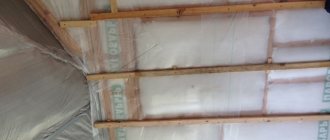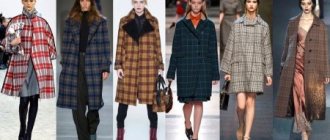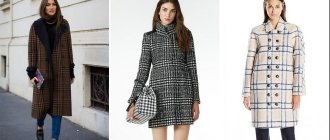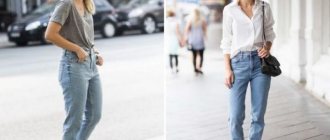Description
Crepe chiffon fabric - what is it? Unlike chiffon, the material is almost opaque (does not show through), and it differs from crepe in its thinness and lightness. The description of crepe chiffon fabric can be given as follows - an opaque, lightweight double-sided fabric with a grainy structure, slightly rough to the touch.
The canvas is created as follows:
- The warp and weft threads are twisted in opposite directions (right and left). The twist is quite dense, sometimes up to 3000 revolutions per 1 square meter of fabric
- After twisting, plain weave is used
- Next, the material is exposed to high temperatures, which provides a special, “grainy” structure of this fabric
You can see what crepe chiffon fabric looks like in the photo:
Does this matter stretch or not? Due to the nature of the crepe weave, the material is not at all elastic. Price per meter – from 150 rubles (synthetic fiber), from 1500 rubles (natural raw materials).
Reviews
Irina:
I bought myself a chic crepe chiffon dress for prom. At the ball I was the most fashionable and stylish. My outfit was not just beautiful and snow-white, it remained chic throughout the evening, as it did not wrinkle. After my graduation, this dress stayed with me for another 3 years, and then my sister wore it, but during this time it did not deteriorate at all.
Svetlana:
I spent a long time choosing a dress for my wedding, and finally, a friend recommended an outfit made of crepe chiffon. At first I doubted it, but when I put it on while trying it on, I realized that it was for me. It was so light, airy and tender that I couldn’t resist. By the way, my husband was also pleasantly surprised when he saw this gorgeous outfit on me.
Catherine:
I recently purchased a homemade blouse made of crepe chiffon. I am very pleased with the purchased products. It's summer and hot, and this product has excellent breathability and is lightweight. My blouse doesn’t wrinkle and washes perfectly, but you need to do it with your hands and not with a washing machine. I hope that the presented product will serve me for a long time.
Compound
The composition of the material includes silk fiber - in different quantities, which determines the cost of an item made from this material. Sometimes silk threads are completely replaced with synthetic ones, and the material loses significantly in price. For the production of crepe chiffon they use:
- Silk
- Cotton
- Viscose
- Polyester
- Polyamide
We recommend that you read:
- What is crepe-satin fabric (there is a photo in the article);
- Georgette fastening material and its properties;
- Description and definition of the group of crepe materials;
Crepe chiffon bubble
This is know-how in the textile market, so this material is an infrequent guest in retail outlets and online stores, despite the great popularity of chiffon. Crepe chiffon bubble is a light, airy synthetic material characterized by a special structure and porosity.
The material differs from ordinary crepe chiffon in the special bubble weaving of the fabric, which gives it a unique relief structure and graininess. Its surface is matte, without shine, with many small bubbles.
It has an original structure, perfect for sewing clothes, both for holidays and for everyday wear.
Advantages and disadvantages
To get an idea of matter, it is worth focusing on its characteristics, positive and negative properties.
Advantages
- The matter, although dense and opaque, is surprisingly airy
- The fabric is double-sided - the front side cannot be distinguished from the back side
- Spectacular grainy texture
- Crepe chiffon is resistant to mechanical damage and tearing
- You can use it to create beautiful draperies
- Things don't fade when washed
- Colors well, a huge palette of colors and interesting prints
- Does not cause skin irritation
Flaws
- Not very convenient to process; difficulties may arise when cutting and sewing
- May shrink when washed
- If it contains silk fibers, the material is high maintenance
Crepe chiffon: what kind of fabric, characteristics
Most often, the canvas is painted in a single color, but there is fabric with patterns and colors. Clothes made from crepe chiffon along with satin have become very popular.
Important! This material must be handled with great care.
Dyed crepe chiffon
To have an idea about the material, it is worth paying attention to its characteristics. The canvas can be made not only from pure silk, but also from other components, which is why the structure will be slightly different. Classic crepe chiffon, like any other fabric, has its pros and cons.
Red dress
Advantages:
- Fabric density. The manufacturing method of this material provides good strength, but the canvas is surprisingly light and airy.
- Large palette of colors. Due to the flexibility of the fabric to dyeing, there is a huge selection of colors and various patterns.
- Things do not lose their color when washed. This is another “pleasant” property of matter. This is due to the fact that the canvas lends itself very well to coloring, which is difficult to wash off.
- No reverse side. The material does not differ between the front and back sides. Even if you look closely, nothing is noticeable. This makes it convenient to use.
- Draps easily. Thanks to this, you can often find inserts in clothes made from this fabric, which become a wonderful decoration for any clothing.
- Grain, which gives the fabric an unusual charm.
- Does not cause irritation. Due to its lightness, the fabric does not cause discomfort when worn.
Green skirt
There are few downsides to this fabric, but they can easily put you off when choosing. These include:
- Problems in care. This fabric may shrink when washed, especially if the fabric is 100% silk.
- Sewing experience required. A beginner in sewing may find it difficult to work with this material. This is due to the fact that when cutting it begins to slide. To avoid this, use clamps.
You might be interested in what Angora wool is: what animal is it made from, characteristics of the material
Application
It is used to create light and airy dresses, sundresses, suits, skirts and other items of women's wardrobe, as well as for decorative finishing of “every day” items. Owners of curvaceous figures leave excellent reviews about the crepe chiffon material - outfits made from this fabric perfectly hide figure imperfections and make the image light and airy.
Types of material
There are several types of material:
- With special coating. A golden or silver coating is applied to the canvas, which shimmers in the light.
- With lurex. Shiny threads are woven into the fabric.
- Bleached. This is a classic type of material.
Crepe chiffon can be plain or printed. It is often decorated with small or large peas.
The variety of colors of summer material is enormous. Emerald, cream, blue, and blue shades look especially advantageous. Lavender tones are in fashion this season.
See what the fabric looks like up close:
Care
Let's start with the fact that when heavily soiled, it is best to have such products cleaned. If the item just needs to be refreshed, wash it by hand with the addition of a gentle washing powder. You don’t have to wring out the product, just shake it.
As for ironing, turn the iron on to the “silk” setting and iron the product through dry gauze.
Varieties of crepe chiffon
What makes chiffon especially popular is its diversity, because items made from this material can be worn both in summer and winter, worn for everyday wear and used for a festive outfit.
What types of crepe chiffon exist:
- with spraying;
- bleached chiffon;
- crepe chiffon interspersed with lurex.
These fabrics go well with materials of the same type and opposite ones (knitwear, artificial and natural leather, fur). Fashionistas often use a combination with smooth shiny satin to create an evening look.
For everyday wear, combination with cotton fabrics, linen, denim, etc. is good.
Advantages and disadvantages
Knowing the advantages and disadvantages allows you to understand what kind of crepe chiffon fabric is and for what purposes it can be used.
Advantages:
- airiness and lightness;
- density;
- unusual granular structure;
- due to the content of a large number of amino acids in the material, the material improves blood circulation;
- has increased tensile strength;
- not prone to deformation;
- the shades that the material can have vary over a wide range;
- little translucent;
- drapes perfectly;
- does not cause allergic reactions even in people with very sensitive skin;
- moisture resistant;
- tolerates direct sunlight well;
- very pleasant to the touch;
- has the ability to repel dust;
- does not fade even after repeated washings.
Flaws:
- When cutting, you should use special clamps, since the fabric is unruly and easily slides over the surface;
- may shrink a little after washing;
- if the composition contains natural silk, then the material requires especially delicate care.
Areas of application of chiffon
Noble material is used for different purposes. Chiffon is chosen for making:
- elegant clothes: evening, ball, and wedding dresses look truly luxurious;
- home textiles: light curtains do not prevent the penetration of light into the room, and translucent canopies over cribs look gentle and evoke tenderness;
- accessories: fabric is used to decorate belts, hairpins, brooches.
Also, airy textiles can act as decorative elements - flounces, ruffles, frills.
Read more about the composition of chiffon
The modern textile industry produces noble, flowing fabric from different fibers.
| Thread type | Characteristics of raw materials |
| Natural |
|
| Artificial | The real beauty is viscose chiffon. Viscose, obtained by splitting cellulose fibers with caustic soda, gives the fabric softness, makes it flowy, pleasant to the body and comfortable to wear. |
| Synthetic |
|
During the production process, the threads are intertwined crosswise. This technology provides the sandy structure of chiffon and explains the presence of a barely noticeable mesh, which can only be seen when looking at the material in the sun.
